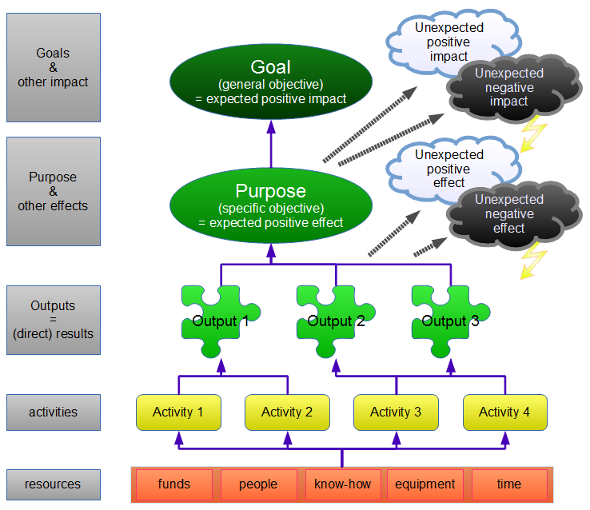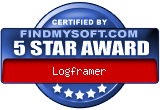Output, outcome and impact
The logical framework allows you (and stimulates you) to see beyond the direct results (or outputs) of your activities. To achieve your project’s central objective, you use resources and do activities that produce tangible results or outputs. The main objective or purpose of your project is the outcome that you expect after all your efforts. But your project may lead to other outcomes, some of which you may have expected, but other you haven’t foreseen. These outcomes may be positive or negative.

For instance you can do a project with the purpose of providing water to the population of a village. You organise people and mobilise resources to build (activities and means) a water storage basin (output). As you expected, the village now has year-round access to water (outcome). Other expected outcomes may be that a lower percentage of livestock dies, so people also have a higher income. An unexpected outcome may be that neighbouring villages are attracted to this water source, which may lead to competition and conflicts.
While the outputs are visible as soon as the activities that created them are finished, outcomes generally come along when the project is well underway and heading towards the end, or even after the project has been completed. On a longer term, and a wider scale, the project can have a wider impact on the local society. Again, such an impact can be both expected or unexpected, and both positive or negative.
To continue with the water basin example: the easy access to water may free the women of the village from walking long distances to water holes. This way they could have more time for other activities and raise more income for their families. With more income, children can go to school, there is money to pay doctors or buy medicines, or the family can invest in better housing. In this case, improving access to water has a positive impact on education levels, health and housing conditions.





Comments
Output, outcome and impact analysis
Logframe will be very useful for preparing the input, output, outcome and impact analysis of a programme we have implemented.
Add new comment